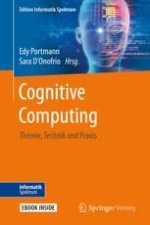2020 | OriginalPaper | Buchkapitel
Maschinen zur Lösung der grossen Probleme – Ein formeller Rahmen
verfasst von : Philip Gross
Erschienen in: Cognitive Computing
Verlag: Springer Fachmedien Wiesbaden
Aktivieren Sie unsere intelligente Suche, um passende Fachinhalte oder Patente zu finden.
Wählen Sie Textabschnitte aus um mit Künstlicher Intelligenz passenden Patente zu finden. powered by
Markieren Sie Textabschnitte, um KI-gestützt weitere passende Inhalte zu finden. powered by
